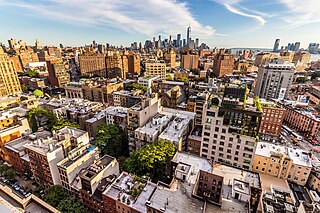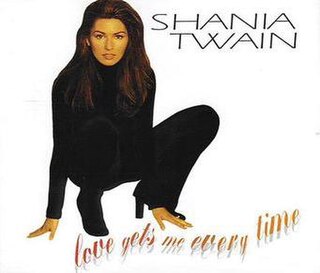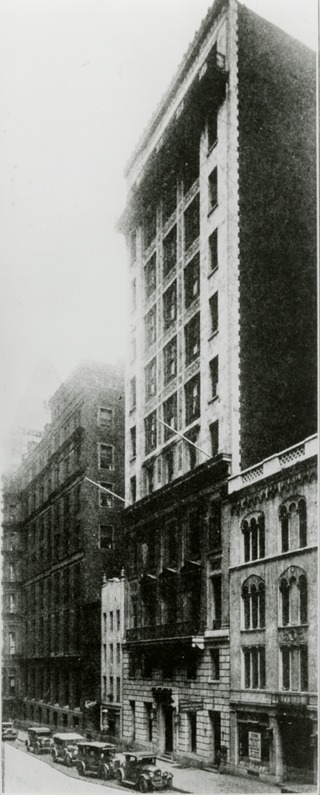
Greenwich Village, or simply The Village, is a neighborhood on the west side of Lower Manhattan in New York City, bounded by 14th Street to the north, Broadway to the east, Houston Street to the south, and the Hudson River to the west. Greenwich Village also contains several subsections, including the West Village west of Seventh Avenue and the Meatpacking District in the northwest corner of Greenwich Village.

Dorothea Lange was an American documentary photographer and photojournalist, best known for her Depression-era work for the Farm Security Administration (FSA). Lange's photographs influenced the development of documentary photography and humanized the consequences of the Great Depression.

Bohemianism is a social and cultural movement that has, at its core, a way of life away from society's conventional norms and expectations. The term originates from the French bohème and spread to the English-speaking world. It was used to describe mid-19th-century non-traditional lifestyles, especially of artists, writers, journalists, musicians, and actors in major European cities.

The Woman in Me is the second studio album by Canadian country singer-songwriter Shania Twain and her first to be produced by long-time collaborator and then-husband Robert John "Mutt" Lange. Released on February 7, 1995, it went on to become her biggest-selling recording at the time, selling 4 million copies by the end of the year, and was eventually certified 12× Platinum by the RIAA on December 1, 2000, for 12 million shipments throughout the United States. The album has sold an estimated 20 million copies worldwide. It was ranked number 8 on CMT's list of 40 Greatest Albums in Country Music in 2006. The album is credited with having influenced the sound of contemporary country music. Eight singles were released from the album for its promotion, including "Whose Bed Have Your Boots Been Under?", "Any Man of Mine", "(If You're Not in It for Love) I'm Outta Here!" and "You Win My Love", with each accompanied by a music video.

The Bohemian Club is a private club with two locations: a city clubhouse in the Nob Hill district of San Francisco, California, and the Bohemian Grove, a retreat north of the city in Sonoma County. Founded in 1872 from a regular meeting of journalists, artists, and musicians, it soon began to accept businessmen and entrepreneurs as permanent members, as well as offering temporary membership to university presidents and military commanders who were serving in the San Francisco Bay Area. Today, the club has a membership of many local and global leaders, ranging from artists and musicians to businessmen. Membership is restricted to men only.

The Judson Memorial Church is located on Washington Square South between Thompson Street and Sullivan Street, near Gould Plaza, opposite Washington Square Park, in the Greenwich Village neighborhood of the New York City borough of Manhattan. It is affiliated with the American Baptist Churches USA and with the United Church of Christ.

John Nelson Sullivan was an American videographer who chronicled life in Downtown Manhattan’s arts and club scene from 1983 until his death. His hundreds of videos documented daily life in the city, wild nights out on the town, and private moments with his many famous friends — including RuPaul, Keith Haring, Sylvia Miles, Larry Tee, Susanne Bartsch, Tom Rubnitz, Lady Bunny, Michael Musto, Ethyl Eichelberger, John Sex, and Michael Alig.

"Man! I Feel Like a Woman!" is a song by Canadian singer-songwriter Shania Twain from her third studio album, Come On Over (1997). Written by Twain and her longtime collaborator and then-husband Robert John "Mutt" Lange, who also produced the track, the song was released first to North American country radio stations in March 1999 as the eighth single from the album, and it was released worldwide later the same year. "Man! I Feel Like a Woman!" is a country pop song with lyrics about female empowerment and remains one of Twain's biggest hits worldwide.

William Winter was an American dramatic critic and author, born in Gloucester, Massachusetts. He graduated from Harvard Law School in 1857, then chose literature as his field of endeavor, and moved to New York City (1859), where he became literary critic of the Saturday Press, then (1861–65) of the New York Albion, and for more than 40 years (1865–1909) was a drama critic of the New York Tribune.

"Love Gets Me Every Time" is a song by Canadian singer-songwriter Shania Twain. It was written by Twain along with her then husband Robert John "Mutt" Lange, and produced by Lange. It was released on September 23, 1997, by Mercury Records Nashville as the lead single from Twain's third studio album Come On Over (1997). It was chosen as such following weeks of careful deliberation and constant reconsidering. Originally titled "'Gol Darn Gone and Done It", the song's title was altered because of its difficulty to pronounce. The song regards falling in love despite numerous attempts to evade it. It is an uptempo number that prominently features fiddle.

Maynard Dixon was an American artist. He was known for his paintings, and his body of work focused on the American West. Dixon is considered one of the finest artists having dedicated most of their art to the U.S. Southwestern cultures and landscapes at the end of the 19th-century and the first half of the 20th-century. He was often called "The Last Cowboy in San Francisco."

The Lotos Club is a private social club in New York City. Founded primarily by a young group of writers and critics in 1870 as a gentlemen's club, it has since begun accepting women as members. Mark Twain, an early member, called it the "Ace of Clubs". The Club took its name from the poem "The Lotos-Eaters" by Alfred, Lord Tennyson, which was then very popular. Lotos was thought to convey an idea of rest and harmony. Two lines from the poem were selected for the Club motto:
In the afternoon they came unto a land In which it seemed always afternoon
Jaime Davidovich was an Argentine-American conceptual artist and television-art pioneer. His innovative artworks and art-making activities produced several distinct professional reputations including painter, installation artist, video artist, Public-access television cable TV producer, activist, and non-profit organizer. He is the creator of legendary downtown Manhattan cable television program The Live! Show (1979–1984). Billed as "the variety show of the avant-garde", The Live! Show was an eclectic half-hour of live, interactive artistic entertainment inspired by the Dada performance club Cabaret Voltaire and the anarchic humor of American television comedian Ernie Kovacs.

The South Village is a largely residential area that is part of the larger Greenwich Village in Lower Manhattan, New York City, directly below Washington Square Park. Known for its immigrant heritage and bohemian history, the architecture of the South Village is primarily tenement-style apartment buildings, indicative of the area's history as an enclave for Italian-American immigrants and working-class residents of New York.

James F. Bowman was a journalist and poet in Northern California, and a co-founder of the Bohemian Club. Bowman served on several newspapers in Placerville, Sacramento and San Francisco during a 24-year career. Through his contacts among San Francisco journalists, Bowman befriended Mark Twain, artist William Keith, critic Ambrose Bierce and a great many others.

Arthur Putnam was an American sculptor and animalier who was recognized for his bronze sculptures of wild animals. Some of his artworks are public monuments. He was a well-known figure, both statewide and nationally, during the time he lived in California. Putnam was regarded as an artistic genius in San Francisco and his life was chronicled in the San Francisco and East Bay newspapers. He won a gold medal at the 1915 San Francisco world's fair, officially known as the Panama–Pacific International Exposition, and was responsible for large sculptural works that stand in San Francisco and San Diego. Putnam exhibited at the Armory Show in 1913, and his works were also exhibited in New York, Philadelphia, Chicago, Paris, and Rome.
Rondal Partridge was an American photographer. After working as an assistant to well-known photographers Dorothea Lange and Ansel Adams in his youth, he went on to a long career as a photographer and filmmaker.
GoNightclubbing is a collaboration between video artists Pat Ivers and Emily Armstrong, who worked together to document the New York punk rock scene beginning in 1977. Ivers had previously worked with Metropolis Video from 1975 until their dissolution in 1977. Originally, Ivers and Armstrong were known as Advanced TV, but they incorporated as GoNightclubbing in 2001.

The Chemists' Club is a private club in New York whose membership is open to research and industrial chemists from all areas. The Chemists' Club filed for incorporation on December 9, 1898. The Club's goal was "to promote the interests of chemists and those interested in the science and applications of chemistry", by providing academics and industrial chemists with space to meet, work, and study. It provided a place for members of various chemical societies to meet and mingle, including the American Chemical Society, the Society of Chemical Industry, the Verein Deutscher Chemiker, the American Electrochemical Society and the American Institute of Chemical Engineers (AIChE).















